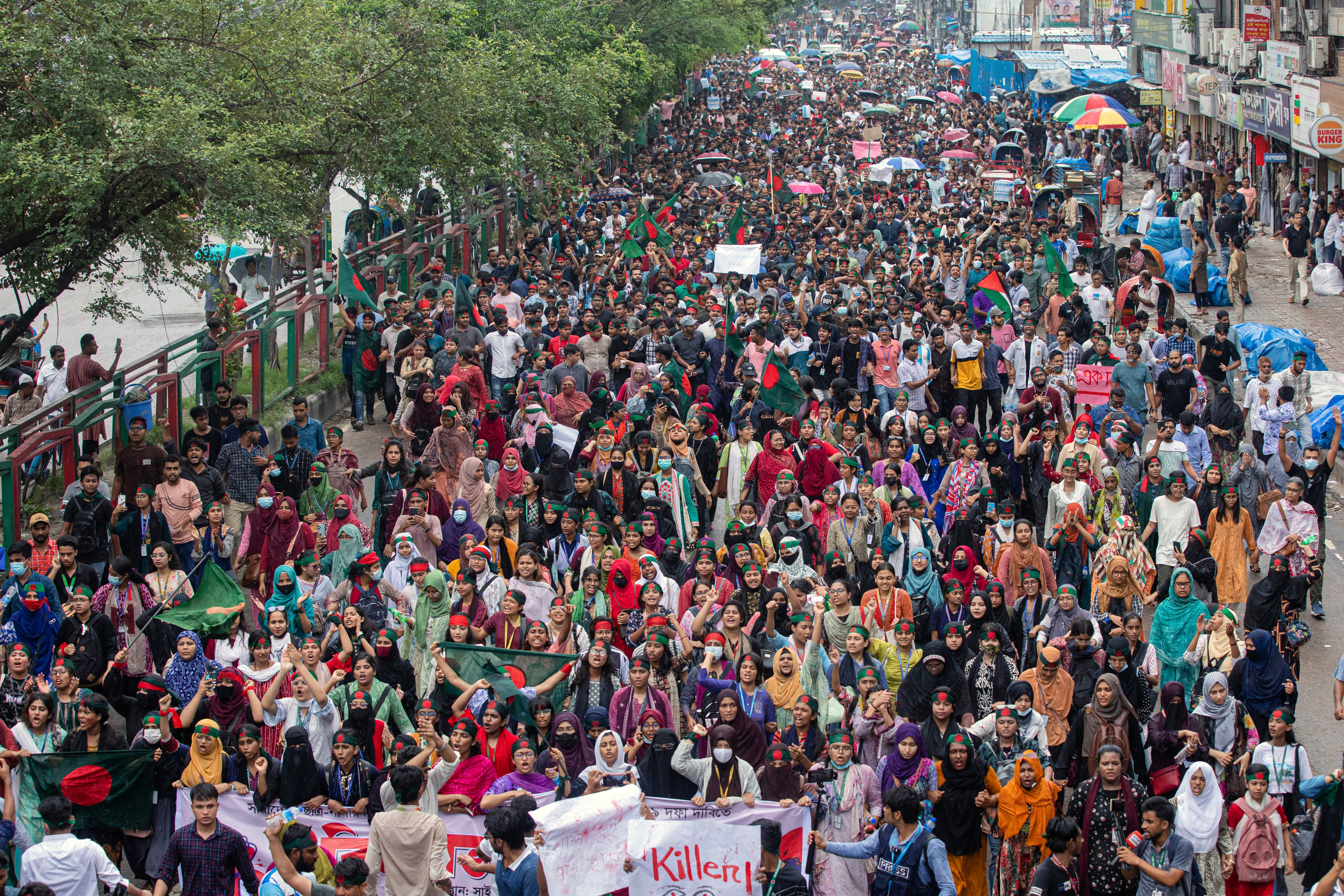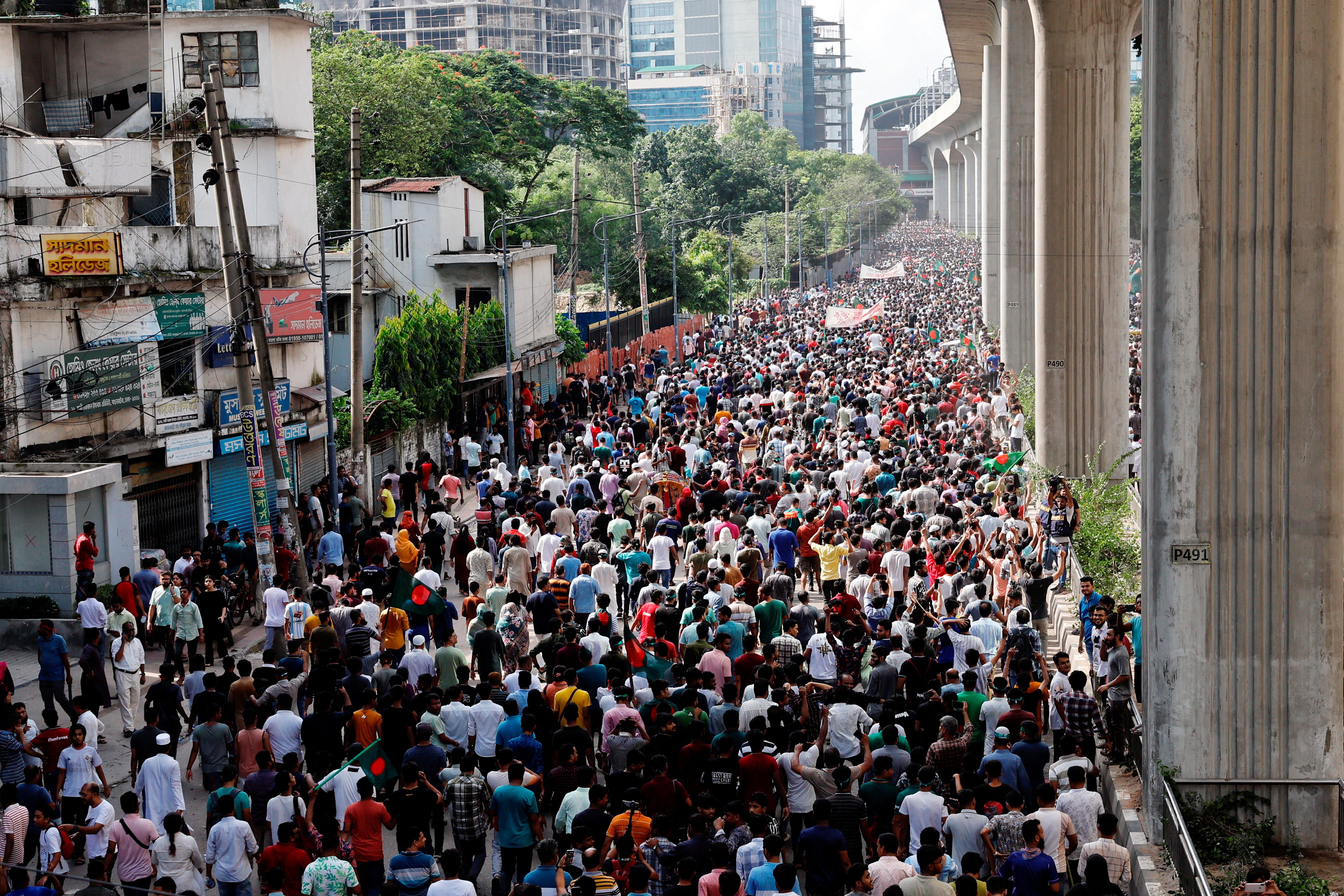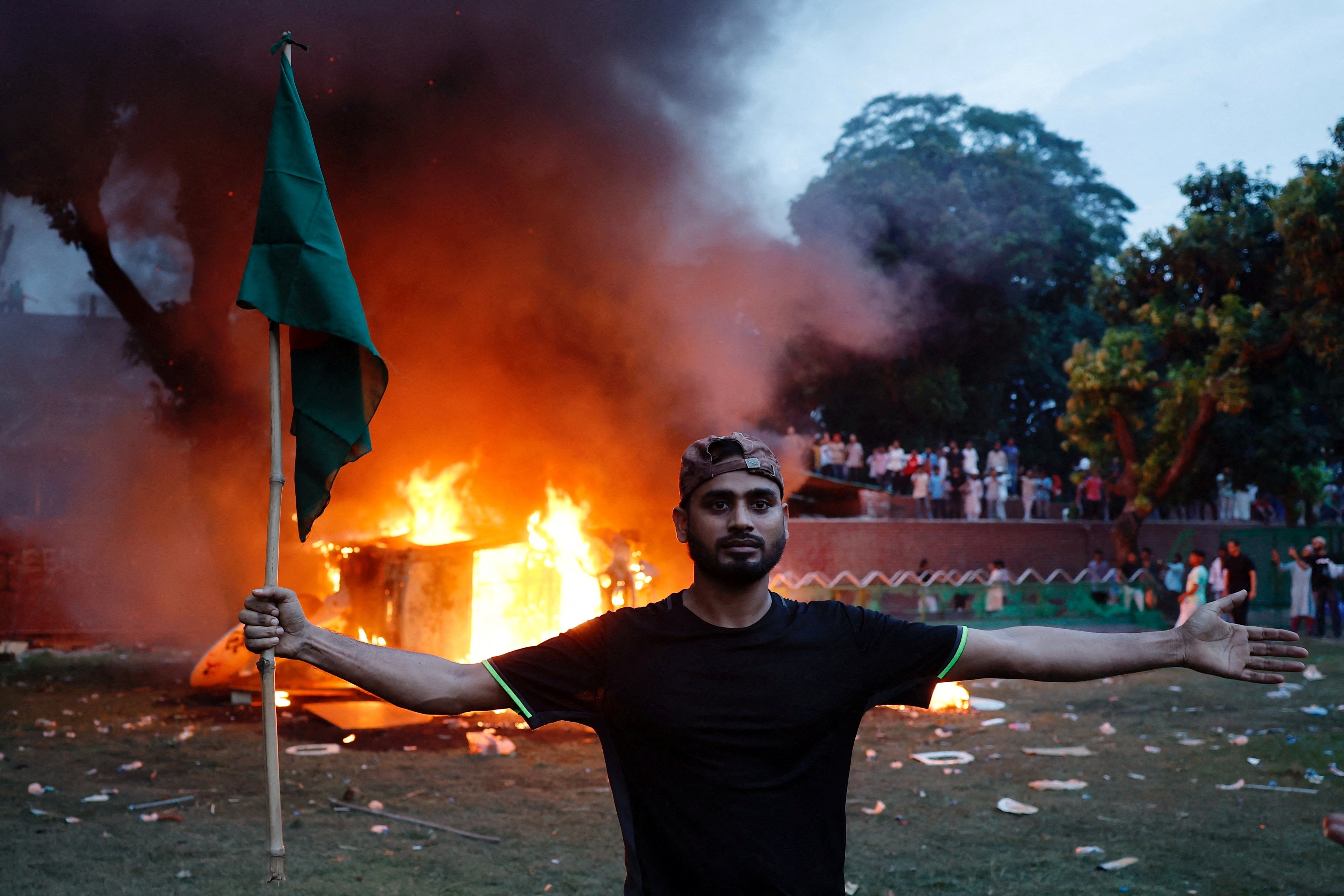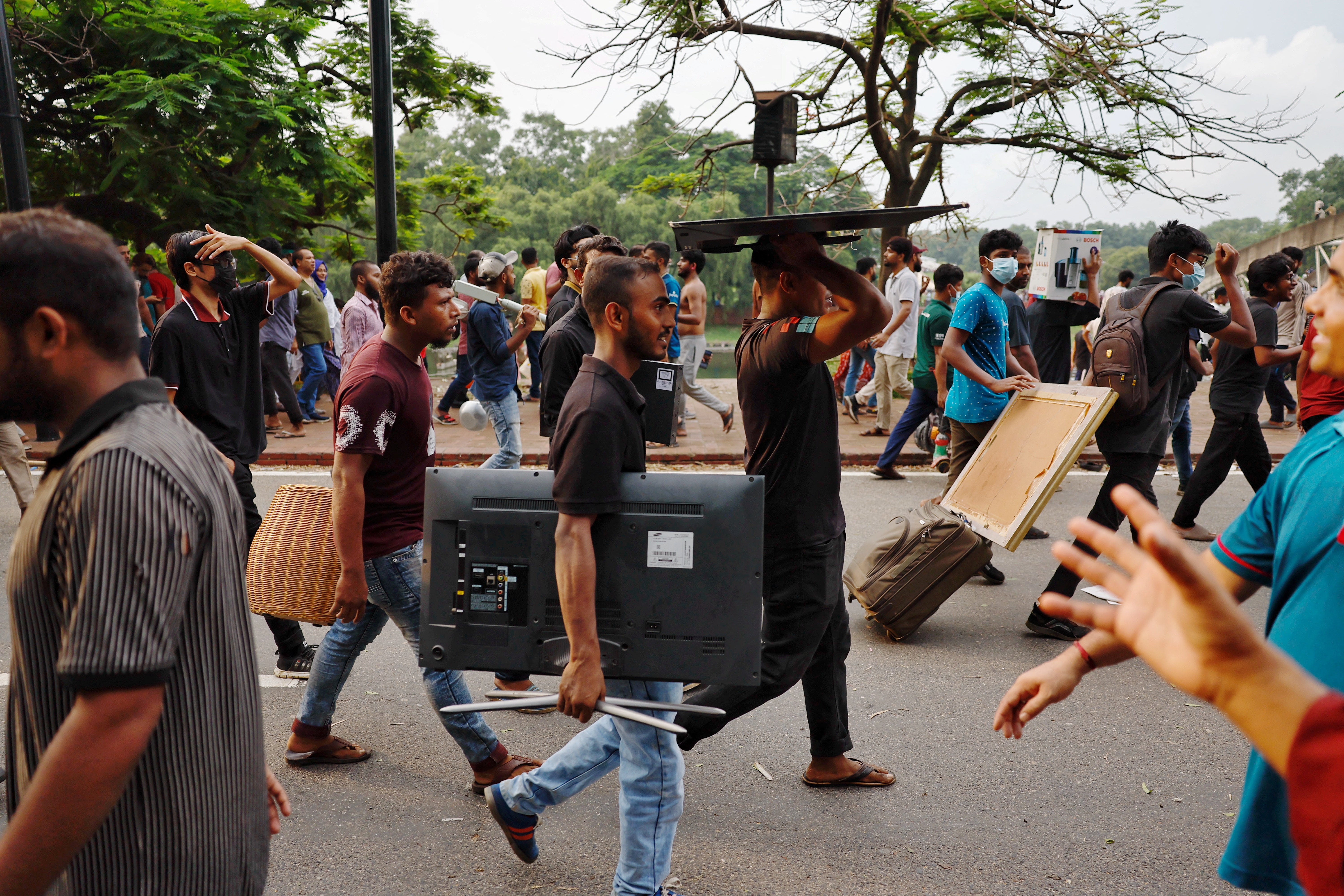How Bangladesh’s students carried out world’s first Gen Z revolution
After years of discontent, students backed by the opposition in Bangladesh overthew the authoritarian government of Sheikh Hasina. Alisha Rahaman Sarkar reports

Bangladesh is no stranger to student protests but rarely has the country witnessed such large numbers of inexperienced young people take on a giant political figure such as Sheikh Hasina Wazed.
The protests began in June when thousands of school, college and university students, mostly in their twenties, poured onto the streets across the country, demanding an end to a system ensuring 30 per cent of government jobs went to the descendants of independence war heroes – and later the resignation of the prime minister.
The month-long protest culminated on Monday with extraordinary scenes as Bangladeshis stormed Prime Minister Hasina’s palatial official residence, forcing her to flee the country in an abrupt end to her 20 years in power across two spells.
As she fled with her daughter and sister to India, protesters rejoiced in streets still stained by blood from violent clashes between students, the security forces and counter-protesters from the ruling party Awami League’s student wing.
“There was a sense of ecstasy in the air, a sense of joy and celebration that we had collectively put an end to the barbaric rule of Sheikh Hasina,” Saima Rehman, a 22-year-old university student, tells The Independent.
Ms Hasina ruled Bangladesh with an iron fist, her time in power characterised by a ruthless approach to her critics, deeply flawed elections and the mass arrest of opposition politicians to the point where there was very little space left for dissent in the country.
For many like Ms Rehman, these demonstrations were a watershed moment, the first time they had felt compelled to take to the streets in protest. “We have heard about the history of protests [in Bangladesh] but I never thought I’d partake in one,” she says.
“We didn’t think we had the courage to stand up to the ruling party but it seemed real when we marched toward her official residence,” she adds.

“It is a historic day in Bangladesh as what started out as a student-led movement to change the civil service quota system transformed into a revolution that ousted the 15-year rule of Sheikh Hasina,” says Sabrina Karim, associate professor of government at Cornell University.
“This might very well be the first successful Gen Z-led revolution.”
If it can be said that they come from a generation notorious for spending their lives absorbed by their screens, protesters used this to their advantage as those same social media platforms were put to good use organising the protests that started as peaceful demonstrations. The situation turned violent when the Bangladesh Chhatra League – the student wing of the ruling party – began counter-protests, leading to clashes.
Sensing a challenge to her rule, Ms Hasina ordered law enforcement agencies to unleash brute force against the protesters to try to quash them – killing more than 280 people in July.

Soon the opposition Bangladesh Nationalist Party and the Jamaat-e-Islami threw their weight behind the students, leading the protests to become one of the biggest revolutions in the history of south Asia.
At one point last week it appeared the protests might have fizzled out – restrictions on internet services and an indefinite curfew severed student coordinators from their social networks and seemed to throttle their fury. The internet shutdown forced the student leaders to adopt old-school methods such as telephone calls and word of mouth to gather people.
“Once the internet was briefly back, we put out posts on Facebook calling people to join. Of course, we reached out to the masses through the media but messaging apps were mostly used to circulate the notes,” a 25-year-old student, who doesn’t want to be named, tells The Independent.
The restoration of the internet and the immediate new call for protests that followed, this time demanding nothing short of Ms Hasina’s resignation, was answered by millions of people, who gathered in the streets of Dhaka and other cities in defiance of the curfew.
Ms Hasina made one last attempt to quash the protests by force, with Sunday’s clashes leaving at least 109 people dead, including 14 police officers, and hundreds of others injured. Another 130 died on Monday morning before the army told the government it would shoot at protesters no more – effectively ending Ms Hasina’s rule.
“It is remarkable that all the student groups could come together to organise the second bout of protest this week. We are surprised that people in record numbers joined the agitation despite the police violence and the brutal killings. The people, the students, they were all prepared to die for their country,” the Dhaka University student says.
After Ms Hasina’s resignation, many members of the opposition party joined those on the streets and there were ugly scenes as they vented their anger against the ruling party. Some were filmed vandalising a statue of Sheikh Mujibur Rahman – the founding father of independent Bangladesh and actual father to Ms Hasina. Large-scale arson was reported from Dhaka, and several houses and offices of ruling Awami League members were torched as the overwhelmed police took a step back.
Bangladesh’s Gen Z revolution has not been without its casualties. At least 440 people have been killed between 16 July and Monday, according to a tally by Bangladeshi daily Prothom Alo. At least 32 children, some as young as four years old, died during the first wave of violence, Unicef said in a statement.
On Tuesday the streets of Dhaka appeared calmer, with no reports of fresh violence as the president dissolved the country’s parliament, clearing the way for new elections.

Ms Karim says there is no guarantee yet that the revolution will be a success – this will be judged on the composition of the interim government, as well as the process going forwards for free elections and “accountability and reparations” for the deaths in the protests.
The army chief, General Waker-uz-Zaman, said on Monday that he was taking temporary control of the country, though protest leaders have said they won’t accept any undue influence by the military on the interim government itself. Bangladesh’s interim government, headed by Nobel laureate Muhammad Yunus, will take oath on Thursday, says the military.
Ms Rehman says that despite the ongoing uncertainty, a huge amount had already been achieved by students who refused to give up on their country: “We don’t know what will happen to this country but I am proud of me and my brethren for overthrowing a dictator.”






Join our commenting forum
Join thought-provoking conversations, follow other Independent readers and see their replies
Comments